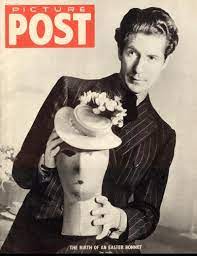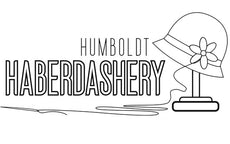
Aage Thaarup: Royal Hat Maker
Aage Thaarup (1906-87) became the first in a line of high fashion male milliners to emerge in the twentieth century. Traditionally, milliners were women who made hats for women and hatters were men who made hats for men. In fact, in times when women did not have many career options, millinery was unique. Females could not only work as manufacturers in the trade but could even become business owners. By the 1920s, however, this gender distinction had started to disappear and many of the best known milliners were men.
Born in Copenhagen, Thaarup got a job in the hat department of Fornesbeck, the city's largest department store at the time, to raise funds for college. He liked working with hats and worked there for three years. When he got an education grant, he supplemented his education by learning English and Fashion Drawing. Thaarup left Denmark to work in Berlin and then moved on to Paris, where he spent time at the renowned hat making salon Maison Lewis.
Afterwards, Thaarup moved to London. He started to sell hats as a commercial traveler but found he couldn’t make a living this way. An army officer who had recently returned from India suggested Thaarup try his luck there, so he travelled to Bombay. During the voyage, he sold hundreds of hats and built up a client base. The society scene in India was prolific in the early part of the twentieth century, with plenty of polo matches and garden parties, so he set up shop with a milliner in Lahore.
Thaarup returned to London in 1932 and set up a shop off of Berkeley Square. His reputation grew and he began attracting London society customers, including the Duchess of York and her daughters, Elizabeth and Margaret. In 1947, he designed the going-away hat for Princess Elizabeth (later Queen Elizabeth II) after her marriage to Prince Philip.
Throughout the 1950s the media referred to Thaarup as Elizabeth II’s milliner but he did not receive the Royal Warrant until 1961. As a milliner to royalty, his designs had to stay on, coordinate with designer outfits and keep the face revealed for onlookers and press, as well as being contemporary and attractive. Thaarup was instrumental in popularizing women’s hats before, during and after World War 2 and was Britain's top milliner of the time.

Thaarup designed the famous tricorn, a flat-topped black hat with a plume at the side, which the Queen first wore to the Trooping the Colours ceremony in 1951. Until 1986, when Her Majesty stopped riding in the Trooping of the Colours, she would wear the Thaarup tricorn each year, changing the color of the plume to match the feather worn on the side of the guards’ bearskin hats. Thaarup also designed a line of hats for the Queen after her 1953 Coronation and several pieces for The Queen Mother.

Sadly, Tharrup was not the best at business and had to close due to bankruptcy in 1955. Through the backing of friends, however, he was able to continue to make hats on a smaller scale in Chelsea and then later in Hanover Square. He retired in the mid-1960s but kept his Royal Warrant until 1974.
In collaboration with Dora Shackell, Aage Thaarup wrote a biography entitled Heads and Tales in 1956. Thaarup passed away in 1987 in London at the age of 82.
Products
View all
